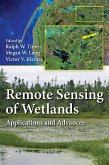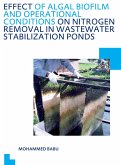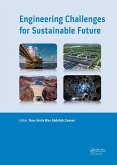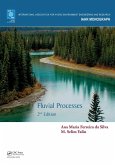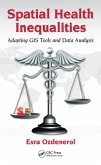Remote Sensing of Wetlands (eBook, PDF)
Applications and Advances
Redaktion: Tiner, Ralph W.; Klemas, Victor V.; Lang, Megan W.
158,95 €
158,95 €
inkl. MwSt.
Sofort per Download lieferbar

79 °P sammeln
158,95 €
Als Download kaufen

158,95 €
inkl. MwSt.
Sofort per Download lieferbar

79 °P sammeln
Jetzt verschenken
Alle Infos zum eBook verschenken
158,95 €
inkl. MwSt.
Sofort per Download lieferbar
Alle Infos zum eBook verschenken

79 °P sammeln
Remote Sensing of Wetlands (eBook, PDF)
Applications and Advances
Redaktion: Tiner, Ralph W.; Klemas, Victor V.; Lang, Megan W.
- Format: PDF
- Merkliste
- Auf die Merkliste
- Bewerten Bewerten
- Teilen
- Produkt teilen
- Produkterinnerung
- Produkterinnerung

Bitte loggen Sie sich zunächst in Ihr Kundenkonto ein oder registrieren Sie sich bei
bücher.de, um das eBook-Abo tolino select nutzen zu können.
Hier können Sie sich einloggen
Hier können Sie sich einloggen
Sie sind bereits eingeloggt. Klicken Sie auf 2. tolino select Abo, um fortzufahren.

Bitte loggen Sie sich zunächst in Ihr Kundenkonto ein oder registrieren Sie sich bei bücher.de, um das eBook-Abo tolino select nutzen zu können.
Effectively Manage Wetland Resources Using the Best Available Remote Sensing TechniquesUtilizing top scientists in the wetland classification and mapping field, Remote Sensing of Wetlands: Applications and Advances covers the rapidly changing landscape of wetlands and describes the latest advances in remote sensing that have taken place over the pa
- Geräte: PC
- mit Kopierschutz
- eBook Hilfe
- Größe: 218.2MB
Andere Kunden interessierten sich auch für
![Remote Sensing of Wetlands (eBook, ePUB) Remote Sensing of Wetlands (eBook, ePUB)]() Remote Sensing of Wetlands (eBook, ePUB)156,95 €
Remote Sensing of Wetlands (eBook, ePUB)156,95 €![Treatment Wetlands (eBook, PDF) Treatment Wetlands (eBook, PDF)]() Robert H. KadlecTreatment Wetlands (eBook, PDF)178,95 €
Robert H. KadlecTreatment Wetlands (eBook, PDF)178,95 €![Natural Arsenic in Groundwater (eBook, PDF) Natural Arsenic in Groundwater (eBook, PDF)]() Natural Arsenic in Groundwater (eBook, PDF)178,95 €
Natural Arsenic in Groundwater (eBook, PDF)178,95 €![Effect of Algal Biofilm and Operational Conditions on Nitrogen Removal in Waste Stabilization Ponds (eBook, PDF) Effect of Algal Biofilm and Operational Conditions on Nitrogen Removal in Waste Stabilization Ponds (eBook, PDF)]() Mohammed BabuEffect of Algal Biofilm and Operational Conditions on Nitrogen Removal in Waste Stabilization Ponds (eBook, PDF)74,95 €
Mohammed BabuEffect of Algal Biofilm and Operational Conditions on Nitrogen Removal in Waste Stabilization Ponds (eBook, PDF)74,95 €![Engineering Challenges for Sustainable Future (eBook, PDF) Engineering Challenges for Sustainable Future (eBook, PDF)]() Engineering Challenges for Sustainable Future (eBook, PDF)215,95 €
Engineering Challenges for Sustainable Future (eBook, PDF)215,95 €![Fluvial Processes (eBook, PDF) Fluvial Processes (eBook, PDF)]() Ana Maria Ferreira Da SilvaFluvial Processes (eBook, PDF)49,95 €
Ana Maria Ferreira Da SilvaFluvial Processes (eBook, PDF)49,95 €![Spatial Health Inequalities (eBook, PDF) Spatial Health Inequalities (eBook, PDF)]() Esra OzdenerolSpatial Health Inequalities (eBook, PDF)65,95 €
Esra OzdenerolSpatial Health Inequalities (eBook, PDF)65,95 €-
-
-
Effectively Manage Wetland Resources Using the Best Available Remote Sensing TechniquesUtilizing top scientists in the wetland classification and mapping field, Remote Sensing of Wetlands: Applications and Advances covers the rapidly changing landscape of wetlands and describes the latest advances in remote sensing that have taken place over the pa
Dieser Download kann aus rechtlichen Gründen nur mit Rechnungsadresse in A, B, BG, CY, CZ, D, DK, EW, E, FIN, F, GR, HR, H, IRL, I, LT, L, LR, M, NL, PL, P, R, S, SLO, SK ausgeliefert werden.
Produktdetails
- Produktdetails
- Verlag: Taylor & Francis eBooks
- Seitenzahl: 574
- Erscheinungstermin: 23. März 2015
- Englisch
- ISBN-13: 9781482237382
- Artikelnr.: 42508540
- Verlag: Taylor & Francis eBooks
- Seitenzahl: 574
- Erscheinungstermin: 23. März 2015
- Englisch
- ISBN-13: 9781482237382
- Artikelnr.: 42508540
- Herstellerkennzeichnung Die Herstellerinformationen sind derzeit nicht verfügbar.
Ralph W. Tiner recently retired from the U.S. Fish and Wildlife Service (FWS) where he served as regional wetland coordinator for the Northeast Region, Hadley, Massachusetts. He has been mapping wetlands since 1970, first as a graduate student at the University of Connecticut, then with the State of South Carolina, and finally as part of the FWS's National Wetlands Inventory Program. Through his participation on national committees, he has helped standardize on-the-ground wetland delineation practices for implementing federal wetland regulations in the United States. He is editor of the Wetland Science and Practice journal and the author of over 200 publications. Megan W. Lang is a research associate professor at the Department of Geographical Sciences, University of Maryland, College Park, Maryland. Her career in wetland sciences began in 1996, as an undergraduate student researching succession in abandoned rice fields while at the College of Charleston, South Carolina. She leads the U.S. Department of Agriculture Mid-Atlantic Wetland Conservation Effects Assessment Project, serves as an associate editor for the journal Wetlands, and has published over 40 scientific articles and book chapters. She has also helped to develop wetland monitoring strategies for the state of Maryland and the United States. Victor V. Klemas is professor emeritus at the School of Marine Science and Policy, University of Delaware, Newark, Delaware. Since 1976, he has directed the university's Center for Remote Sensing, where he pioneered the application of a wide range of remote sensing techniques in the study of wetland and estuarine ecosystems in the United States and overseas. Dr. Klemas has published his research results in 120 scientific journal articles and coauthored several books. He has also served on six scientific committees of the National Research Council (National Academy of Science) and various government advisory panels.
Challenges in Mapping Wetlands. Advances in Wetland Mapping Technology.
Combining LiDAR and optical imagery with Object-based Image Analysis to Map
Wetlands. Wetland InSAR. Classification of Wetlands by Combining Optical
and SAR Data. Utility of Moderate Resolution Satellite Data in Tidal
Wetland Mapping. Mapping and Monitoring Wetland with SAR. Remote Sensing of
Submerged Aquatic Vegetation and Coral Reefs. Remote Sensing of Mangroves.
Salt Marsh Classification Approaches and Future Mapping Methods. Great
Lakes Coastal Wetland Mapping. Mapping Surface Water Variance in the
Prairie Potholes with Landsat Data. Mapping the State and Dynamics of
Boreal Wetlands using Synthetic Aperture Radar. Invasive Species Mapping.
Global Wetland Mapping.
Combining LiDAR and optical imagery with Object-based Image Analysis to Map
Wetlands. Wetland InSAR. Classification of Wetlands by Combining Optical
and SAR Data. Utility of Moderate Resolution Satellite Data in Tidal
Wetland Mapping. Mapping and Monitoring Wetland with SAR. Remote Sensing of
Submerged Aquatic Vegetation and Coral Reefs. Remote Sensing of Mangroves.
Salt Marsh Classification Approaches and Future Mapping Methods. Great
Lakes Coastal Wetland Mapping. Mapping Surface Water Variance in the
Prairie Potholes with Landsat Data. Mapping the State and Dynamics of
Boreal Wetlands using Synthetic Aperture Radar. Invasive Species Mapping.
Global Wetland Mapping.
Challenges in Mapping Wetlands. Advances in Wetland Mapping Technology.
Combining LiDAR and optical imagery with Object-based Image Analysis to Map
Wetlands. Wetland InSAR. Classification of Wetlands by Combining Optical
and SAR Data. Utility of Moderate Resolution Satellite Data in Tidal
Wetland Mapping. Mapping and Monitoring Wetland with SAR. Remote Sensing of
Submerged Aquatic Vegetation and Coral Reefs. Remote Sensing of Mangroves.
Salt Marsh Classification Approaches and Future Mapping Methods. Great
Lakes Coastal Wetland Mapping. Mapping Surface Water Variance in the
Prairie Potholes with Landsat Data. Mapping the State and Dynamics of
Boreal Wetlands using Synthetic Aperture Radar. Invasive Species Mapping.
Global Wetland Mapping.
Combining LiDAR and optical imagery with Object-based Image Analysis to Map
Wetlands. Wetland InSAR. Classification of Wetlands by Combining Optical
and SAR Data. Utility of Moderate Resolution Satellite Data in Tidal
Wetland Mapping. Mapping and Monitoring Wetland with SAR. Remote Sensing of
Submerged Aquatic Vegetation and Coral Reefs. Remote Sensing of Mangroves.
Salt Marsh Classification Approaches and Future Mapping Methods. Great
Lakes Coastal Wetland Mapping. Mapping Surface Water Variance in the
Prairie Potholes with Landsat Data. Mapping the State and Dynamics of
Boreal Wetlands using Synthetic Aperture Radar. Invasive Species Mapping.
Global Wetland Mapping.

